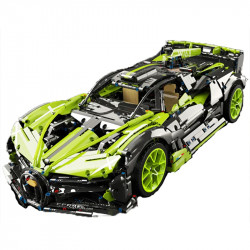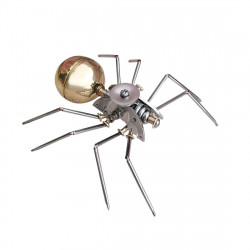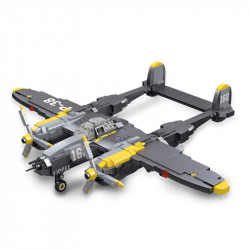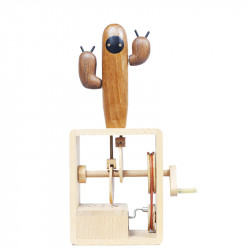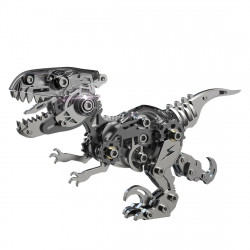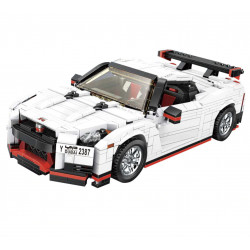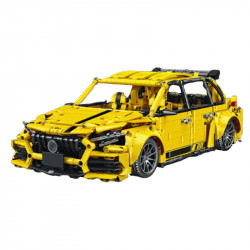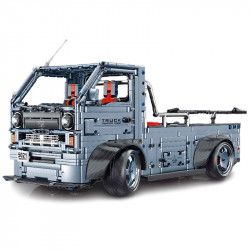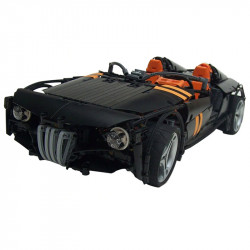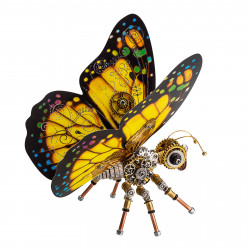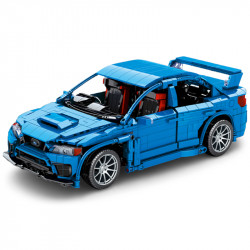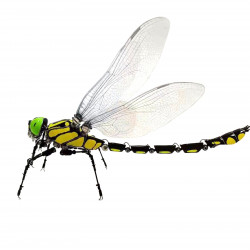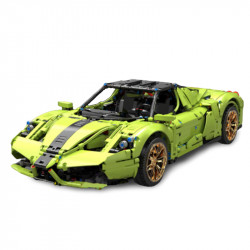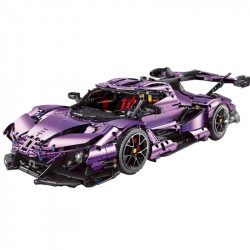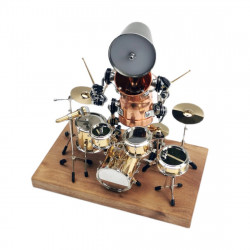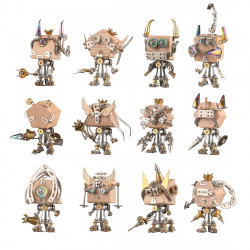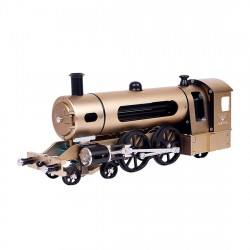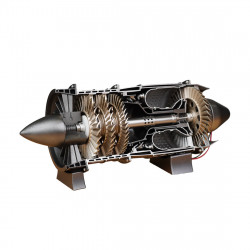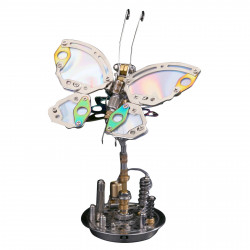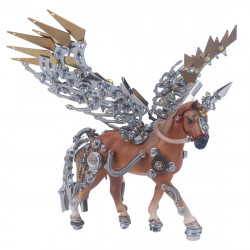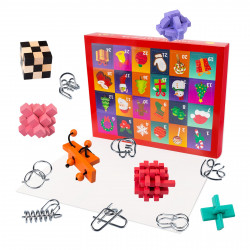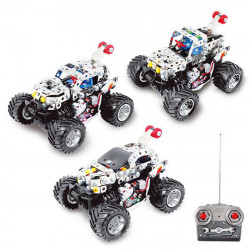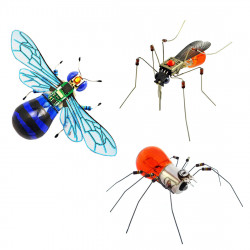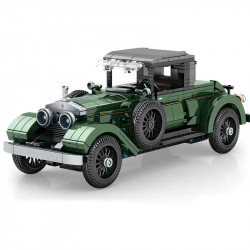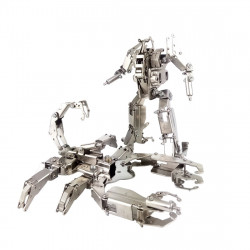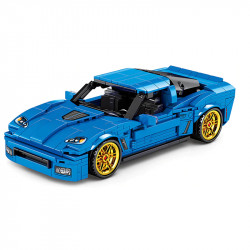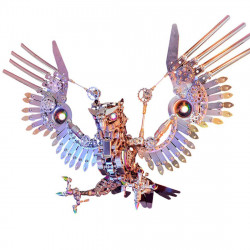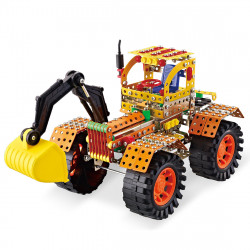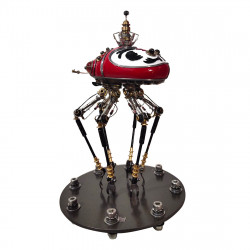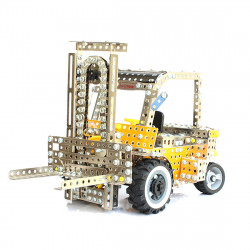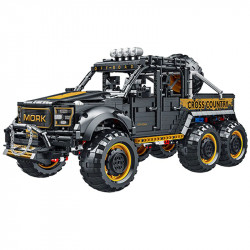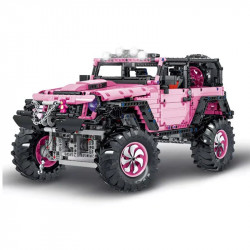The Battle of Metal vs. Wooden Puzzles

The Battle of Metal vs. Wooden Puzzles
Wooden puzzles are typical masterpieces. Many fans, however, claim that they prefer metal puzzles to their wooden counterparts and enjoy them even more. There is nothing wrong with that; puzzles are great because there is something for everyone.
The joy of solving problems and fitting the pieces into the appropriate holes speaks to everyone. Nonetheless, there is a continuous conflict between wooden and metal puzzles regarding challenging ones. However, the argument goes beyond difficulty because the two materials provide very distinct experiences.
The joy of solving problems and fitting the pieces into the appropriate holes speaks to everyone. Nonetheless, there is a continuous conflict between wooden and metal puzzles regarding challenging ones. However, the argument goes beyond difficulty because the two materials provide very distinct experiences.
Fasten your seatbelts because today, we will join the conversation, delve deeper into the world of puzzles, and provide pertinent information.
Original and history of metal and wooden puzzles
Ancient China and Japan have some of the first references to wooden puzzles. The Chinese tangram, with its seven flat pieces that may be assembled to create a variety of shapes, is possibly the oldest wooden puzzle.
The first jigsaw puzzle was made in 1760, and it gained popularity in Europe in the 18th century. However, it may surprise you to learn that metal puzzles have been around since many ancient civilizations. For instance, wire puzzles were created in ancient Rome to assess one's problem-solving ability.
Numerous manufacturing advancements, including improved distribution and more intricate designs, increased the popularity and mass production of metal and wooden puzzles throughout the 19th century.
The challenge of metal and wooden puzzles
Metal puzzles feature complex machinery and a wide variety of hidden sequences. To someone unfamiliar with them, each puzzle belongs to a different category.
To solve each problem, you must disassemble intricate interlocking systems or separate tiny linked pieces. Solving these riddles requires a methodical, step-by-step process and critical thinking. Deciphering the logic of motions and connections is necessary for solving other metal puzzles.
Wooden puzzles test users' spatial visualization abilities, similar to mental origami. They are usually 2D designs that need to be converted into 3D constructions. The majority of them require users to manipulate and rotate pieces while visualizing how everything fits together.
Metal vs. Wooden puzzles types and variety
Sequential discovery, disentanglement, and interlocking puzzles are a few of the most well-liked metal puzzles. The objective of disentanglement puzzles is to separate two or more connected components.
In interlocking puzzles, multiple parts come together to form a single item. The aim is to disassemble and reassemble them to create the object. Sequential problems must be solved in several predetermined steps.
They frequently have secret tools and mechanisms that need to be found. Jigsaw puzzles, 3D puzzles, sliding puzzles, tangram puzzles, puzzle boxes, brainteasers, and blur puzzles are only a few of the different shapes of wooden puzzles.
Size differences between metal and wooden puzzles
Due to their material, metal puzzles can be incredibly small. Nevertheless, they can feature detailed patterns and a variety of interlocking mechanisms that make them challenging to solve.
It indicates that you require greater patience and agility. Larger pieces are typically seen in wooden puzzles, which facilitate handling, assembly, and grasping. Therefore, they are typically more approachable to novices.
While wooden puzzles are easier to handle, it might be challenging to picture the entire assembly and fit all the parts in the correct locations because they typically use flat components to create big 3D constructions.
Metal vs. wooden puzzles – difficulty
The degree of complexity varies for both kinds of problems. However, there are certain broad patterns about difficulty ceilings. Metal puzzles have a higher potential complexity since they have complex machinery in their designs.
There are easy metal puzzles for beginners and intricate creations that call for sophisticated critical thinking. Solving a particularly complex metal device can be pretty rewarding. The design's complexity and piece count determine the difficulty of wooden puzzles.
Hundreds of components may call for concentrated attention to detail and critical thinking. However, compared to their metal equivalents, the most challenging wooden puzzles are typically simpler to solve.
Which type is best for you?
After outlining the primary distinctions between these two puzzle categories, let's examine which one best suits your tastes and character. It is advisable to use metal puzzles if you enjoy logical challenges. This is the best choice if you enjoy working with mechanisms and discovering hidden systems.
You must use an analytical approach to solve these riddles and work out each step separately. You will feel great accomplishment after eventually breaking the code, and the process might keep you interested for hours.
On the other hand, if you're more of a visual person and enjoy assembling disparate parts into a cohesive whole, wooden puzzles might be more fulfilling. As you watch your creation come to life, test spatial understanding by manipulating components to construct various aspects of a structure.
Popular metal and wooden puzzles
Consider the following wooden and metal puzzles for yourself:
Metal
Among the most well-liked metal puzzles are Hanayama cast puzzles, such as cast elk, cast enigma, and cast loop. Additionally, you want to think about tavern puzzles such as the patience and iron heart puzzles.
Consider purchasing the Metal3dpuzzles Crystal Lamp Jumping Spider if you want to make an amazing metal model or Felix Ure Puzzles if you want to make high-end disentanglement puzzles.
Wooden
When it comes to wooden puzzles, you can choose from traditional tangrams, magnetic tangrams, Burr puzzles, Japanese Kumiki puzzles, and Karakuri puzzle boxes. Numerous intriguing sliding block puzzles, such as Klotski and Fifteen Puzzle, are also available.
Conclusion
Whichever choice you choose, spend some time looking through the various puzzles. Above all, purchase puzzles from reputable companies that offer a first-rate experience. There isn't a better choice between these two kinds of puzzles. After all, why not try both and discover which you like best?
FAQ
1. What is the origin of metal and wooden puzzles?
Ancient China and Japan originated wooden puzzles like the Chinese tangram. In the 18th century, they gained popularity throughout Europe. Wire puzzles were used to test problem-solving abilities in ancient civilizations like Rome, where metal puzzles first appeared.
2. What are the main differences between metal and wooden puzzles?
Due to their intricate mechanics, metal puzzles frequently require deconstructing complex systems or separating related pieces. They need a methodical, analytical approach. Typically, wooden puzzles use spatial visualization to create 3D creations from 2D designs.
3. Which type of puzzle is better for beginners?
Because wooden puzzles have larger pieces and are simpler to hold, they are often better for beginners. They are also more approachable because they are easier to handle and put together.
4. How do metal and wooden puzzles compare in terms of difficulty?
Metal puzzles can be more challenging because of their intricate systems and potential for greater difficulty. In general, wooden puzzles are simpler to complete than the most demanding metal puzzles, though the difficulty varies depending on the intricacy and quantity of pieces.
5. How do I choose the correct puzzle for me?
If you like solving logical puzzles and discovering secret systems, go for metal puzzles. They give a rewarding experience when solved and call for an analytical approach. If you like to visualize and put buildings together, wooden puzzles are perfect because they test your creativity and spatial reasoning.
6. What are some recommended metal and wooden puzzles?
Metal3dpuzzles Crystal Lamp Jumping Spider and Hanayama cast puzzles like Cast Elk, Cast Enigma, and Cast Loop are suggested metal puzzles. Karakuri puzzle boxes, Japanese Kumiki puzzles, Burr puzzles, classic tangrams, and magnetic tangrams are examples of popular wooden puzzles.

